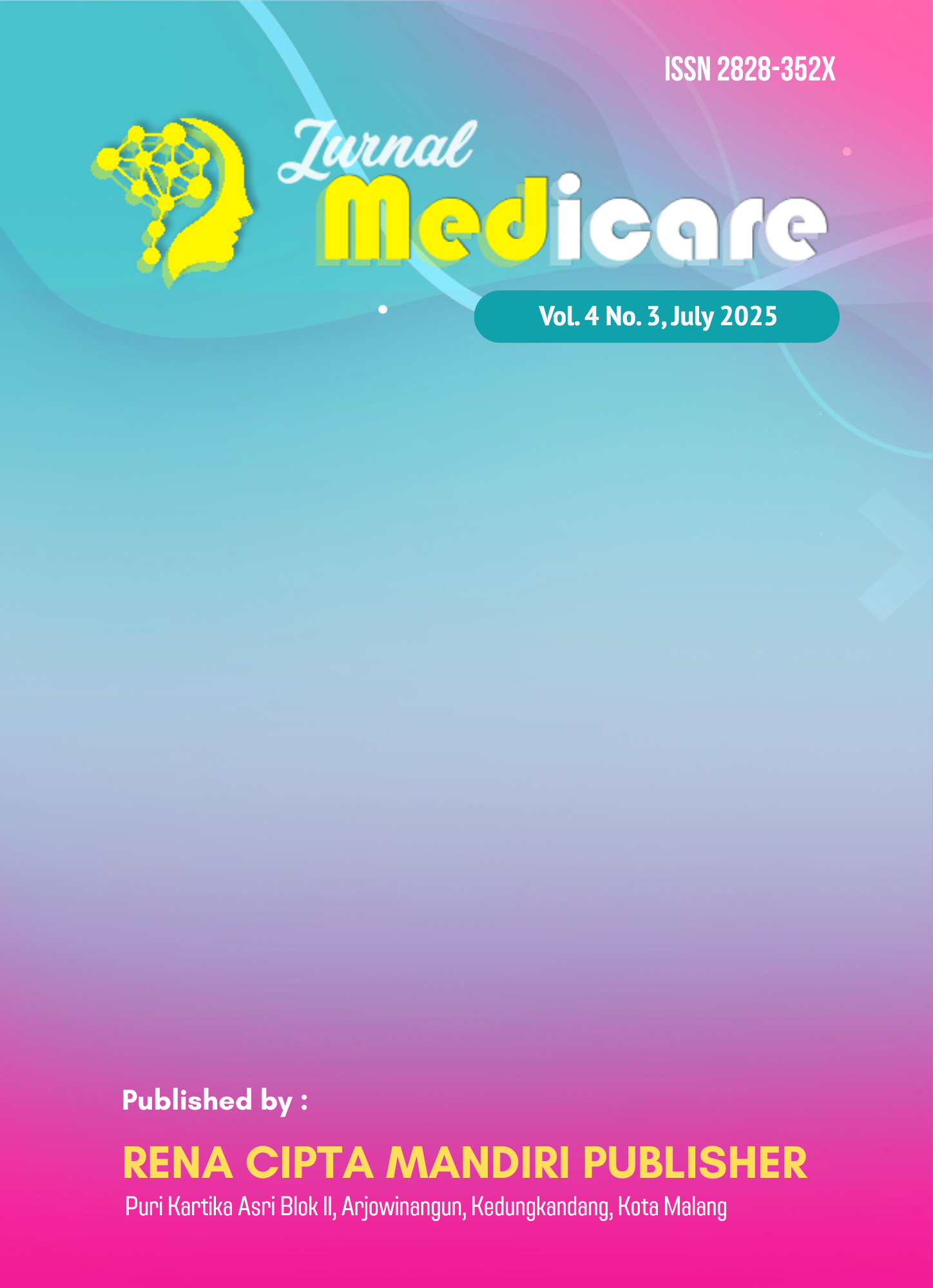ANALISIS RISIKO GANGGUAN LAMBUNG PADA POLA MAKAN PEDAS DAN CARA PENANGANANNYA PADA GENERASI Z DI SATU WARALABA MIE PEDAS DI KOTA BEKASI
DOI:
https://doi.org/10.62354/jurnalmedicare.v4i3.222Keywords:
green tea leaf, black pepper, phytochemical screening, secondary metabolitesAbstract
Spicy food has now become a favorite among many young people, especially Generation Z. In addition to its tantalizing taste, spicy food is often featured in social media content in the form of challenges. This habit can increase the risk of gastric disorders if not accompanied by proper knowledge and management. This study aims to determine the influence of spicy food consumption patterns, knowledge levels, and handling practices on the incidence of gastric disorders among Generation Z at a spicy noodle franchise in Bekasi City. The method used was quantitative correlational with a cross-sectional approach, involving 100 respondents. The results of the multiple linear regression test showed a correlation coefficient (R) of 0.610 (strong category) and an R Square of 0.372 (moderate category). The chi-square test showed a p-value for eating patterns of 0.000 < 0.05, knowledge of 0.001 < 0.05, and management of 0.000 < 0.05, indicating that all variables had a significant effect on gastric disorders. Based on the results of the study, it can be concluded that spicy eating patterns, knowledge, and handling practices significantly influence gastric disorders among Generation Z.
Downloads
References
Ajjah, B.F.F., Mamfaluti, T. and Putra, T.R.I., 2020. Hubungan pola makan dengan terjadinya Gastroesophageal Reflux Disease (GERD). Journal of Nutrition College, 9(3), pp.169–179. https://doi.org/10.14710/jnc.v9i3.27465
Citra, R., Sartika, T. Al-Ma’arif Baturaja, A.K., 2020. Gambaran tingkat pengetahuan tentang jenis makanan pada penderita gastritis di Puskesmas. Lentera Perawat, 1(2), pp.61–66.
Firanda, C., Rahma, J.A., Sinulingga, A.B., Ginting, R.E., Manurung, R.A., Simatupang, B.J. and Rahmadsyah, A., 2024. Analisis pengaruh pelayanan dan kualitas makanan terhadap tingkat minat pelanggan Mie Gacoan di Medan. JIIC: Jurnal Intelek Insan Cendekia, 1(8), pp.3260–3268.
Nizar, R., Siswati, L. and A, H.U., 2023. Persepsi Generasi Z terhadap makanan khas dari sagu di Provinsi Riau. JAS (Jurnal Agrosains), 7(1), pp.18–31. https://doi.org/10.36355/jas.v7i1.1007
Santika, N.Y., Desnita, R. and Akib Yuswar, M., 2019. Evaluasi penggunaan obat tukak peptik pada pasien tukak peptik di instalasi rawat inap RSUD Sultan Syarif Mohamad Alkadrie Pontianak. Majalah Farmaseutik, 15(1), pp.1
Downloads
Published
How to Cite
Issue
Section
License
Copyright (c) 2025 Jurnal Medicare

This work is licensed under a Creative Commons Attribution-ShareAlike 4.0 International License.
Licensing for Data Publication
-
Open Data Commons Attribution License, http://www.opendatacommons.org/licenses/by/1.0/ (default)
-
Creative Commons CC-Zero Waiver, http://creativecommons.org/publicdomain/zero/1.0/
-
Open Data Commons Public Domain Dedication and Licence, http://www.opendatacommons.org/licenses/pddl/1-0/















